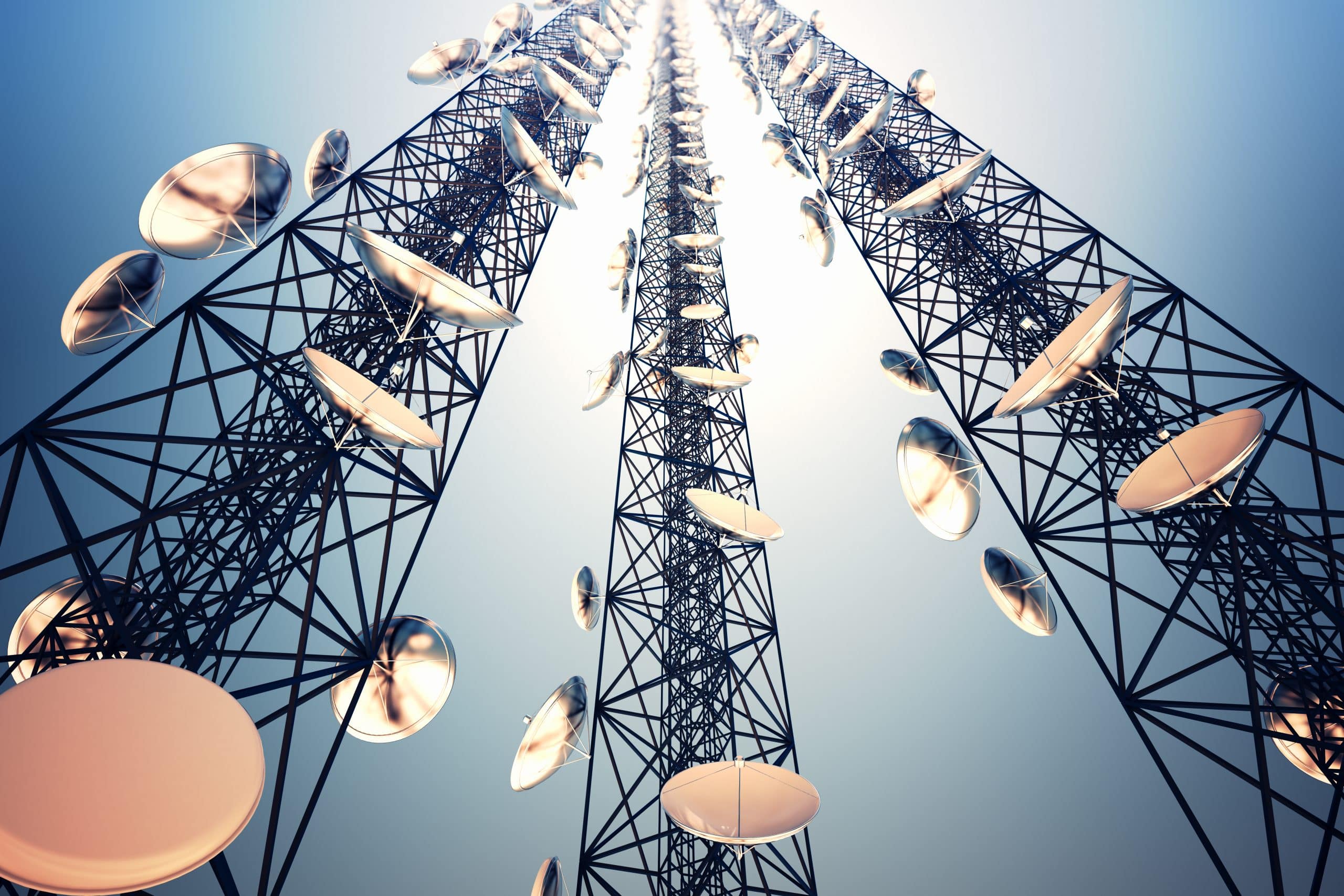What is RF Technology?
Radiofrequency (RF) technology facilitates electromagnetic wave modulation, transmission, and reception within the radio frequency spectrum. After RF currents are generated and modulated to contain data (such as audio or sound), the RF signals are transmitted through the air as waves. After traveling through various communication channels, like radio frequencies or satellite systems, the signals are interpreted on the receiving end and converted back to their intended purpose.
These invisible RF signals allow us to connect, communicate, drive, work, and travel in a wireless and industrial world. Despite being all around us and powering much of what we do, RF technology remains a mystery for many. The average person usually only knows the name of the technology or its basics rather than fully understanding how it works and why it’s become such an important aspect of society.
What are the Types of RF Technology?
RF technology offers a fast-expanding range of functionalities to address various needs. Some everyday uses include TV signals, texting, calls, Bluetooth, and Wi-Fi.
RF technology is also used for more advanced applications such as:
-
- Near-field Communication (NFC): Enables communication between two devices when touched together or nearby.
- Global Positions Systems (GPS): A U.S.-owned and operated utility that provides navigation and location data to military and civilian users.
- Radar: Used to locate and detect objects.
- Satellite Communication: A process that enables global telecommunications.
- Radio Frequency Identification (RFID): Identifies and tracks tags attached to products, such as commercial goods.
- Military and defense applications: Sophisticated RF networks enable electronic warfare, navigation, cell phone jammers, and maintain long-term communication between personnel and military vehicles.
- Internet of Things (IoT): A network of Internet-enabled physical devices that leverage RF connectivity.

Applications of RF Technology
Applications of RF technology have played a central role in developing the modern world. Daily actions that are now second nature, like heating food, tracking items, and sending information, are possible because of advanced radio frequency applications.
The same technology that powers daily life also powers more niche, powerful applications across diverse industries. For example, RF signals can penetrate food molecules to generate heat and penetrate muscles or tissues in a therapeutic procedure called Diathermy.
Radio frequency is non-ionizing, meaning RF signals pass through atoms or molecules without breaking their bonds. Radar, a primary application of radio frequency, can transmit waves not visible to the human eye and is used in various applications, including contactless payment, identifying airport contraband, and non-invasively analyzing internal tree decay.
RF technology has predictably now made its way into most industries.
RF Technology in the Military
RF technology is indispensable for radar systems, serving as the backbone of defense and early warning systems. The electromagnetic spectrum has become a staple of electronic warfare since the first radio waves were used in battlefield operations over a century ago.
RF technology allows military personnel to communicate information far beyond visual range, without being limited by terrain. Radars were secretly developed for intelligence gathering during World War II, but have advanced far beyond their initial uses. In modern warfare, radars are not only employed to detect and track enemy aircraft and warships—now, they can interfere with enemy radar systems, too.

RF Technology in Healthcare
Beyond defense and meteorology, RF technology plays an important role in healthcare systems, supporting vital machinery like MRIs and wireless patient monitoring systems that safeguard lives. RFID, a type of radio frequency technology, can locate critical tools, optimize the use of medical equipment, and track pharmaceutical products.
Aged care facilities, in particular, benefit from the long-range, immediate capabilities of RF technology. This application of radio frequency allows them to track residents at risk of wandering or alert nurses in real time to a senior citizen’s fall or distress.
RF Technology in Agriculture
Even the agriculture industry uses RF technology to monitor soil conditions and crop health to improve harvests and reduce food waste. These examples highlight the utility and adaptability of RF technology. It facilitates communication, data transfer, navigation, and automation across a broad spectrum of industries, cementing its role in our interconnected society.
RF Technology and Cell Phone Detection
RF technology also plays a pivotal role in cell phone detection. It stands as a technological cornerstone that enables security and law enforcement agencies to locate and track mobile devices. The ability to pinpoint the location of mobile devices is not only essential for law enforcement in criminal investigations but also plays a crucial role in ensuring public safety and national security.
RF technology, in conjunction with cellular networks and sophisticated algorithms, allows for the real-time tracking of mobile phones. This data enables quick response to emergencies, cases of missing persons, and criminal activities.

Most business leaders should familiarize themselves with radio frequency applications, specifically cell phone detectors, as a part of a proactive cybersecurity approach. Unauthorized mobile phones are a real threat to high-stakes business environments, increasing the risk of privacy breaches, data leaks, and covert surveillance.
RF technology’s role in cell phone detection is more than just convenience—it’s an essential tool that helps maintain the balance between individual privacy and societal security.
RF Technology Challenges
RF technology, while critical in our modern world, faces several challenges. For one, there is an increased amount of interference from various sources that can disrupt transmissions, causing unreliable or weak signals.
Spectrum crowding is also a growing concern. As more and more devices rely on RF technology, our communication networks are increasingly at risk. To maintain optimal service, the spectrum must be managed and protected properly. Ensuring security against signal interception is paramount, particularly in sensitive applications, like the military, government, and other commercial industries.
Is RF Technology Safe?
While generally considered safe, RF technology does pose some risks. RF generates heat, which in high doses, can penetrate biological tissue and cause cancer or tumors. However, most everyday RF technology applications don’t emit enough radiation to reach that point. Although legislation differs by county, some regulations restrict the amount of RF radiation that could leak from household heating applications, such as microwaves.
Occupational exposure is generally the primary factor that pushes an individual into the range of dangerous RF radiation levels. The at-risk industries include telecommunications, military, broadcasting, or aviation, where employees operate or maintain RF technology, like air defense radar signals or active broadcasting antennas. These industries are tightly regulated, and employees are required to take measures such as limiting the distance between person and equipment or reducing the exposure duration.

The Future of RF Technology
RF technology will continue to revolutionize industries and our lives, especially with the growth of the Internet of Things (IoT) and its applications in smart homes, self-driving vehicles, and interconnected cities. The demand for faster, more efficient wireless networks will drive further innovation, keeping RF technology at the forefront of the digital age.
Whether it’s enabling the seamless flow of data, powering medical devices, or creating the next generation of technologies, RF technology will continue to shape our future.
The versatility, speed, and accuracy of RF technology are immense. Cellbusters’ products rely on these powerful radio frequency systems to help our customers identify and overcome potential threats from evolving technology. Count on Cellbusters’ Zone Producer as a catalyst for all your safety and security goals.







